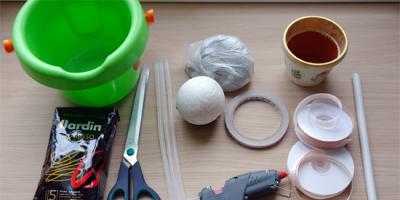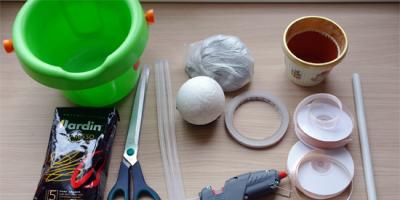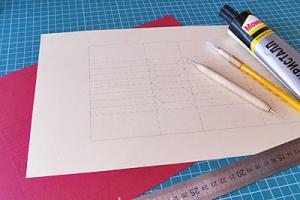Modern market finishing materials offers a large selection door handles. The most reliable handle models are round ones. Round handles have reliable performance characteristics. But from time to time they may break down or there may be a need to completely replace the entire door opening mechanism. Therefore, many property owners have a question: how to remove a round door handle?
Types of door handles
Before you begin repairing or replacing the door opener, you must determine what type it is. Currently, there are several types of pens:
- push handles;
- knob pens;
- stationary mechanisms.
Lever handles can be installed both on interior doors and on entrance (outdoor) doors. Their characteristic feature is that the door latch goes into inner part blades while pressing the handle. In the normal state, the locking mechanism is in the extended state.
Such locking mechanisms are most often installed on doors that have mortise locks. Protective pads are installed on them, so dismantling the handle must be done carefully so as not to damage the pads. Moreover, you need to remember the place where the latch was located.

Take off round pen should be done very carefully so as not to damage the elements of the mechanism.
Knob handles are most often used for closing internal doors. They are made in the shape of a ball, in the center of which there is a keyhole. You can open such a lock using a key only on one side; on the opposite side there is a locking button.
Stationary door mechanisms are manufactured in the form of special strips equipped with various brackets. They are fastened directly to the door leaf using self-tapping screws or self-tapping screws. This handle is equipped with a roller latch, which allows for reliable fixation of the door passage.
Disassembling the round handle
To remove the door handle, you need to prepare a slotted and Phillips screwdriver. During this process, a stop wrench will be useful, which should be supplied with the mechanism.
Initially, using a slotted screwdriver, you need to pick up and remove the round cover located around the mechanism. Next, using a stop key, which, if missing, can be replaced with a thin, sharp object, you need to press the stopper and pull the handle towards you. The handle must be pulled carefully to prevent breaking of the mechanism elements.

After the cover is removed, you need to unscrew the screws on its side. On different models the number of screws may vary, but on average it is 3-4 pcs. Now you can remove the door handle from both sides of the door. Lastly, unscrew the fasteners that hold the latch mechanism in place.
After the functionality of the entire mechanism has been checked, it is necessary to install the remaining parts and a decorative plug (bar) in the clamping part. In this case, the square profile located in the design of the locking device must be completely recessed into the latch. To do this, the latch must be rotated so that its edges coincide with the edges of the rotating square rod.
The final stage of work
On final stage It is necessary to push the removable parts of the handles all the way. In this case, the decorative strip must be installed so that its groove is aligned with the fastening mechanism. Otherwise, it will simply not be possible to assemble the entire locking structure.
After assembling all structural elements, it is necessary to check the quality of work and fixation of the door. To do this, you need to turn the handles on both sides of the door until they stop. In this case, the turn should be easy. There should be no clicking sounds. This procedure should be repeated 5-6 times. If everything works smoothly, you can proceed to operating the door.

From time to time, situations may arise when there is no need to change the entire closing mechanism, but only need to replace the side of its rotation. To cope with such a task, you need to rebuild the entire structure of the castle. To do this, remove the handles and lock the latch in the closed position.
Then you need to turn the handle with the locking part in the reverse position and insert it into the locking mechanism. Next, the second handle is inserted, all fasteners are tightened and the build quality is checked.
Working with stationary door handles
If the doors in the house are equipped with stationary opening mechanisms, then using a screwdriver you need to unscrew the screws on its main part. After this operation is completed, it is necessary to inspect the handle. This will help determine whether there is damage to it. If a breakdown is detected, it is best to completely replace the entire constipation.
It is better to replace the constipation with a similar design. If this is not possible, then you need to make sure that the fixing pad on the new device matches the previous model. This will help avoid drilling additional holes, which are often simply impossible to complete. This is due to the fact that the new holes will partially overlap the old ones. This will lead to an increase in the overall diameter of the hole, which will not allow for reliable fastening.

In order not to make a mistake in similar choice, selection of a new handle should be done only after dismantling the old one. And then, with this sample, go to the store and select the required model.
Also, such locking devices can be equipped with a common rod. To determine this, you need to hold the handle on one side of the door and turn it clockwise on the other side. If a single rod is installed, the second handle will unscrew. After that reverse side needs to be pulled out of the door. This must be done carefully so as not to damage the threaded connections.
Handles with mechanical latches
Those handles that are equipped with mechanical latches must be removed most carefully so as not to break the entire mechanism. Their dismantling is carried out using a screwdriver, which unscrews the mounting screws. Then the decorative trims on both sides are removed. At the same time, you must not bend them, because they are made of thin steel.
The main feature of such devices is the lining, made in the shape of a tetrahedron, and the unique mechanism of the tongue that performs the latch. Therefore, during work, you need to place all removable elements strictly in order, so as not to forget the installation location later.
When all the mounting hardware is removed, you need to inspect the entire structure and understand how the handle is attached. If a hole is made on a tetrahedron-shaped rod, then there should be a similar hole in the handle with the same diameter. A small pin is inserted into such a hole, which has a cap on one side.
If there is a similar pin in the design of the door closing mechanism, then the handle is quite easy to remove. To do this, you need to remove the plugs and carefully pull out the pin.
The cap with which the pin is equipped will prevent it from falling out of the hole while the mechanism is turning. Therefore, it must be remembered that when reassembling, the pin must be inserted so that its head is at the top of the hole.
When carrying out work to dismantle the handles, you must remember that all work must be done carefully and accurately so as not to damage the elements of the entire mechanism.
Moreover, you need to lay out the parts in such a way that you don’t forget the place where they were installed later.
Broken door handle interior door There are two types. Most often, when you press the handle, it simply scrolls, the door latch does not react to movement and the door does not open. Less often, the spring inside breaks, the handle sags lifelessly and no longer returns to the horizontal position.
Whichever option you encounter, to solve the problem, the door handle must first be disassembled and removed. The sequence of operation depends on the design and features of the device specific model. Therefore, before we begin describing the technology for removing and disassembling the handle, let's look at what parts it consists of.
Door handle design
The photo below shows the design of the simplest door handle.
The first is the handle itself (in our case, a push handle). A plastic ring is attached to it, which ensures a tight fit of the handle to the base. It is also called a “rosette”, decorative flange or strip. There is a return spring inside it, which guarantees the stability of the horizontal position of the handle.
The next two elements are the travel stop and the locking ring. Their task is to prevent the handle from scrolling further than the required trajectory. All these components are sequentially located on the rod (Square in the image) and secured with a locking screw. The rod, in turn, is inserted into the locking mechanism and drives the latch.
The next photo shows the disassembled handle on the socket with a little more complex design some details.

Having understood the names and purpose of each of the elements, let’s move on to the sequence of removing the handle from the door and disassembling it.
Step-by-step instructions for performing the work
- First of all, remove the handle (indicated in the photo above). It is attached to the rod with a locking screw, or, in the simplest case, secured with a spring-loaded locking pin. We unscrew the screw with a screwdriver or a hexagon, depending on the shape of the groove on it. If we are dealing with a spring-loaded pin, then you need to press it inward with a nail and forcefully pull the handle away from the door.
- By removing the handle, we gain access to the socket. If the mounting screws are visible on the socket, then by unscrewing them we can immediately remove it from the rod. But more often there will be a special overlay on top of the fasteners (a decorative flange - in the photo above it is labeled as a socket). It will have a groove where it meets the door, by which it can be pryed with a screwdriver and removed. Perhaps the trim just needs to be turned counterclockwise if it is held on by the thread. By removing the decorative trim we gain access to the mounting screws that secure the socket itself. Since access to them is open and nothing is in the way, they will be easy to unscrew with a screwdriver.
It happens that the socket, just like the handle in other designs, has a hole in the end: there is a spring-loaded pin in the recess. In this case, to remove the socket, you need to press on it with a nail, while simultaneously pulling the socket off the rod. If you find a hole, but there is no pin in it, this means that when installing the handle, the socket was turned around its axis and the pin is located somewhere else. You can find it by smoothly turning the socket with a nail inserted into the recess until the nail rests on the pin.
After disassembling the handle in the suggested sequence, you will be able to determine the exact design of your particular model. And based on its characteristics, draw conclusions about what exactly caused the breakdown and how to fix it.
Types of handles for interior doors
Door handles are sold in two types: “knob” and “rosette”. The handle of the knob is usually hollow and light, while the handle on the rosette is made of more massive materials and is usually non-hollow inside. Over time, when the spring mechanism wears out, the first structure may begin to wobble or even sag. The second is that it will last longer and be more comfortable to use. Accordingly, their prices differ: most budget options— these are knob handles.

The shape of the handles is divided into rotary And push. The push button has classic shape handles: when you press it, the door latch is hidden in the lock body and the door opens. The rotary handle has a ball shape, which makes it less noticeable. In addition to the difference in design, these two designs differ in features that are not obvious at first glance.
The rotary handle is more compact: it is more difficult to accidentally touch it when passing by the door. And if this happens, it will not be as painful as with a push handle. At the same time, using a ball-shaped pen every day with wet or oily hands from cream is very inconvenient - your hands slip. So, if used regularly on kitchen or bathroom doors, the push handle will create fewer problems for you.
Many women who glue their eyelashes are interested in the question, and then how to remove the bunches of eyelashes? Of course, you shouldn’t pull out these bunches of eyelashes with all your might, because... you can thus damage your natural eyelashes.
Removing these bundles is very simple, since the glue used for fastening easily dissolves in water. But, in order not to harm your eyes and spoil your eyelashes, it’s better to first do steam bath. To do this, place cotton balls soaked in cool water on your eyes and leave for a while. During this procedure, the glue will soften and can be easily removed.
Next, you should use a cream or other cosmetic product(the main thing is that there is a high fat content) to remove makeup, after applying it to the eyes, you need to carefully and carefully begin to remove the tufts of eyelashes. Never use nail polish remover to remove eyelashes. Based on how the hairs were glued - in bunches or pieces - it will depend on how they need to be removed (in a bunch or one at a time). It would be good to do this with tweezers and, during this process, there is no need to rush, so as not to accidentally injure your natural eyelashes.
On your eyelids, after the procedure, you should apply makeup remover again, remove the remaining glue and apply a special eyelid cream. Fake eyelashes can be used several times in the future if you put them in a storage container. Don't forget that our eyelashes have a unique property of self-renewal, which occurs constantly every 3 weeks. To strengthen and nourish them, many girls use burdock oil.
After removing false eyelashes, a protective mask will not harm your natural ones. You can use castor, burdock, almond oil, wheat germ oil and other oils for this.
If you have no idea how to properly remove eyelash bundles at home, then it is better to visit a specialist in any beauty salon.
It would be useful for every owner to know how to disassemble the door handle on an interior door. This element is exposed to daily impact from the residents of the house, and the handle is not always treated with care, and therefore sooner or later it may break or you simply want to change it to a new model. In this case, in order not to call a specialist, you can do everything yourself. In addition, disassembling and reassembling a door handle yourself is not so difficult.
Different types of door handles are disassembled differently
Types of handles
Before you start work, you need to decide on the type of fittings. All door handles can be divided into several groups. This classification is perhaps the determining factor when disassembling the structure. So let's take a look:
- Stationary. Not connected in any way to the lock or latch. Serves solely to move the door leaf. Attaches with simple screws or self-tapping screws. It can be one-sided or two-sided, connected by an axial element.
- Push. Usually it has the form of an L-shaped structure with fastening on both sides of the canvas. When a load is applied to the handle, it causes the halyard tongue to move and allows pressure to open the door.
- Rotary. The principle of operation is the same as that of the push model, but you need to turn the handle; most often, such models look like a ball or a button.

Main types of handles for interior doors
Due to its shape, the push model has a certain disadvantage: it can easily be hit. The disadvantage of rotary samples is that a person’s hand can slip along its surface, which makes it difficult to open the door.
There are also models with a decorative flange and on a rosette. What are their main differences? When using a socket, you do not need to drill a huge hole in the door. In addition, such a handle is full-bodied and heavy. But decorative overlays are usually large in diameter and are installed on lightweight hollow nobs with a lock or latch. Both options are worth considering.
Why disassemble the handle
Since these models of door handles are disassembled quite simply and according to a similar principle, anyone can learn how to do this without any problems. But disassembling and assembling handles is not a routine process; the need for this does not always arise. What could lead to such a need?
- Breaking. This is one of the most common reasons, this is especially true for cheap Chinese products. Over time or due to rough handling and ignoring preventive measures, the mechanism wears out and some of its parts fail, so it is necessary to carry out timely repairs to the fittings.
- Replacement of an outdated model. Every year new product models enter the market and it makes sense to replace old models with more advanced ones in technical and aesthetic terms.
- Repair. When renovating a house, most often the interior changes radically in style, so old pen the door may not be suitable and then it needs to be disassembled and replaced.
- Scuffs. The lower the quality decorative covering, the sooner such a pen will become unusable due to the appearance of abrasions, peeling paint or chips on its surface. It is better to replace such fittings if you do not want to spoil the overall impression of the room.

During long-term use, the handle mechanism often fails.
Push
The most popular model of handles for interior doors is push-type. In order to disassemble this type of product, you only need to take one screwdriver. First, unscrew the handle itself, that is, the pressure element. On the side or bottom of such models there is a small recess with a hidden screw; you need to unscrew it with a screwdriver and then remove the element from the axis. In some cases, you may need a hex wrench instead of a screwdriver.
After this, remove the decorative trim that masks the main fastener; in most models it has a thread, so you just need to turn it several times. The screws will open in front of you. Carefully unscrew them and pull the structure towards you, holding the handle on the other side, now you can remove it along with the rotating axial element.
If you need to disassemble a latch or lock, the steps are carried out in the same order, but in addition you need to unscrew the plate from the end of the blade and remove the mechanism installed in it.

Push door handle
Round with rosette
Now let's look at how to disassemble a round door handle. The principle of operation is very similar, but the main difference lies in the method of removing the decorative turning part. If there is no hole for a key or screwdriver on the side of the handle, then you need to manually separate the elements. To do this, hold the handle on one side of the door motionless, and turn the other part and remove it from the thread; you may just need to pull it towards you.
After that, remove the socket in the same way and unscrew the screws. Remove the axle and proceed to other elements: the lock or latch, if necessary. When removing decorative parts, it is important not to overdo it so that some elements of the mechanism do not burst.

Round door handle with rosette
Nobs
In order to disassemble the round knob handle, you will need an additional special key to clamp the spring mechanism.
The key included in the kit may not be the right length; in this case, it can be replaced with a nail or other thin object.
First, remove the decorative trim from the top. Using a wrench or nail, move the spring-loaded pin, inserting the tool into the access hole on the side, while simultaneously pulling the handle and removing it along with the cap. After this, you need to pry the latch of the decorative flange and remove it too. Then unscrew the mounting screws on the plate. Now you can completely disassemble the handle and remove both parts along with the axle.
As you can see, there is nothing complicated. In order to assemble the handle, you need to perform all the manipulations in the reverse order: first, install the lock and fix it with a plate, then insert the axle and put on the fasteners, and only then assemble the decorative parts. Don’t forget that you first need to thread the decorative flange, and then put on the pressure or rotary part itself.
Pen - necessary element door fittings designed for convenient door opening. Practicality door design largely depends on the external aesthetic appearance, design features and functionality of this accessory. With constant use of the door, the handle, regardless of the material and type, often becomes unusable: it wears out and breaks. Therefore, in case of any problems, it must be repaired or replaced with another one. In order not to call a specialist, you can perform this procedure yourself.
Brief instructions on how to disassemble a door handle will familiarize the reader with this simple process.
According to the installation method, there are 2 types of handles:
- invoices;
- mortise
Overlay fittings are installed on the door leaf using a strip; for a mortise design, there must be a hole in the door.
By purpose there are:
- input;
- interior.
Based on functionality, door products are divided into 2 types:
- movable;
- stationary.
Movable handles are available in 2 versions:
- rotary (knobs and buttons);
- push.

The analysis of a door handle depends on its type and design features.
Design features
Stationary handles are produced without latches or locks. The fastening elements to the door block are screws or self-tapping screws. Such fixed structures are decorative in nature and serve solely for the movement of the door. They can be 1-sided or 2-sided of different shapes, connected by an axial element. They are installed on interior or plastic balcony door blocks, rarely on entrance ones.
Pressure products consist of 2 levers L-shaped, which are connected by a rod passing through the door block. In such a device, when turning, the halyard tongue enters the inside of the door and locks it. Using the elements, external and are mounted.

The main advantage of the model is its reliability. The failure rate of push mechanisms is much lower than others.
Swivel mechanism Most often they are made in the form of a ball or button with a diameter of 50-60 mm with a lock located in the center of the round handle. The keyhole can have a 2-way exit or 1-way with a latch. The door opens with a simple twist. Such fittings may also contain a door opening blocker. Therefore, they are often used in door structures of bathrooms and interior units, and are also called knob handles.
They are compact, easy to install, and low in price, but have disadvantages such as low strength and fragility due to jamming of spare parts inside the mechanism.
Rotary and push products differ in the shape and method of opening the latch.
Components of the mechanism

Pivot and push door products for interior doors have the following spare parts and components:
- latch;
- strip or socket;
- decorative flange;
- fasteners;
- special key for squeezing and removing the mechanism.
The door hardware kit with keyhole is supplied with keys.
Required Tools
In order to remove the interior door handle, you need to prepare the following tools:
- drill;
- feather drill;
- cutter;
- flat screwdriver or screwdriver;
- roulette;
- marker;
- chisel;
- hammer.

How to remove
Removing door hardware is not a problem if you have necessary tools and minimal theoretical knowledge on the structure of the mechanism. You can remove the door handle yourself without calling a technician. To do this, you must follow the instructions:
- Support and secure the door.
- Pry the decorative flange with a knife and pull it out a little. Underneath there are fasteners that need to be unscrewed.
- There is a spring-loaded locking pin on the decorative flange of the pressure device. Press it in with a screwdriver. In rotary models, the pin is located inside the body. In order to get to it, insert a key or awl through the technological flange hole. If the pin cannot be felt, rotate the flange until it contacts it.
- Press the pin while pulling the door device.
- Unscrew the mounting screws.
- Separate the inside of the door element from the outside, remove the handle and decorative flange.
- If you need to remove the latch and replace or repair it, remove the screws securing it to the side door block, remove the bar, then the mechanism.
When installing accessories to another location, you should not disassemble them for spare parts. It is attached to the door structure in the reverse order. If the handle or latch needs to be repaired or replaced, further disassembly is performed.
How to disassemble a door handle
Replacing a door handle is carried out for the purpose of repairing it due to breakdowns, wear, in the presence of abrasions, scratches, to improve appearance, as well as when completely replacing the door block.

Before starting work, the type of mechanism and its features are established, because some models with simple device are easy to disassemble, and some have more complex elements, such as latches with locks. Carrying out such work is difficult. Therefore, it is necessary to consider replacing each type of door hardware separately.
Round
To disassemble a round door handle or knob handle, you must follow these recommendations:
- Using a tool at hand, hook up a decorative flange or trim with a simple keyless rotary lock.
- Use an awl, nail or special key to press the opened stopper.
- At the same time, carefully pull out the handle and remove it.
- From the side of the removed part, unscrew the bolts from the mounting plate and disconnect it from door leaf.
- Unfasten the cylindrical mechanism, the latch.
- Remove the screws and detach the tab.

If there is no need to change, it is rearranged. It happens like this:
- Insert the latch so that the beveled part of the tongue faces the direction the door closes.
- Fasten with 2 screws.
- Insert the piece of hardware with the key drum on the other side of the door structure.
- Attach the clamping part and secure with 2 screws.
- The handle should turn without jamming and return freely to its normal state.
- Correct it. To do this, you need to carefully hold one side and align the other.
- Attach the decorative trim.
- Insert the rest of the handle.
The accuracy of installation and operation is checked both from the side of the clamp itself and drum device with a key.
Stationary
The stationary product has simple design, is attached to the door with screws. Therefore, it rarely breaks, and is removed only when it is necessary to exchange it for a more functional model.
To unscrew the fittings for an interior door, you need to do the following:
- Inspect the door mechanism for the presence of an axle rod. To do this, hold the handle with one hand and turn it with the other.
- If the mechanism is located on a rod, remove one supporting side, the second comes off on its own.
- If the rod is not found in the handle, use a flathead screwdriver to remove the screws holding the handle in place.
- Remove it by gently pulling it towards you.
When unscrewing the mechanism, you must carefully hold it with your hand so that after removing the connecting screws, part of the product does not fall out of the connector and is damaged.
For interior doors
In the pressing device, the process of disassembling it causes difficulties. This is due to the fact that the fittings are attached to the axial rod and tightened with a 4-sided joint.

To repair the handle of an interior door, disassembling the push mechanism is carried out in 3 stages:
- Remove the screws that hold the cover in place and remove the plugs.
- Then you need to loosen the fixation of the rod and separate the 4-sided square.
- Remove the cover plate on the other side, the remaining part of the mechanism and the axial rod. After removing the parts, you need to pull the handle towards you.
The pressure product is ready for replacement or repair.
How to fix a pen
Door handle repairs are often carried out in the following cases:
- the mechanism does not return to its original position;
- the handle jams and is difficult to turn;
- The tongue does not move when turning or pressing the device;
- the handle falls out without damaging the base.
Often the cause of these problems is wear and tear of the part during constant use. Therefore, it is periodically necessary to lubricate the mechanism parts and the keyhole, and clean them from dust and dirt. When lubricating, the door product is rotated so that the viscous liquid is evenly distributed among the elements.
If the handle is loose, it is necessary to correct and tighten the fasteners.
Sometimes it is necessary to repair the fittings in a metal Chinese door. Products made in China from silumin malfunction and break, and installing a lock on such a door is not easy. Simpler mechanism replace. The principle of operation is similar to replacing an element in interior doors.
In the interior
In door handles for interior doors, repairs are most often made when the handle falls off. The base remains attached.
The reason is the use of low-quality fittings, as a result of which the locking ring could break or fall off.

To carry out repair work, perform the following steps:
- Unfasten the base from the door.
- Inspect the retaining ring. If it has moved, you need to adjust its position and install it. If the ring bursts or breaks, it is replaced with further installation of the handle.
The duration of the procedure is 15-20 minutes.
Repair of the door handle of an interior door is carried out if, after opening the doors, the fittings do not return to their normal position.

The cause of the malfunction is a broken or displaced spiral.
To replace the spiral, carry out the following work:
- remove the device;
- unfasten the damaged part and replace it;
- secure with a locking ring at the top;
- install the mechanism.
If the spring breaks, you can make it yourself from a small piece of steel wire. Pre-wind it, heat it over the fire until it turns bright red and put it in cold water.
Lock removal and repair

Repairing interior door locks is difficult. The causes of malfunctions are different.
When using cheap, low-quality silumin door fittings, the 4-sided pin may break. The solution to the problem is to purchase a steel mechanism from trusted manufacturers and completely replace it.
A common problem with locks is the tongue not working properly. This is possible with a short pin. The square can move in the direction of the latch, pressing it, reducing operation.
Repair work locks are carried out in this way:
- A long pin is purchased and the length is measured.
- Using a grinder, it is shortened to the required size.
- Then you need to disassemble the interior door lock.
- The square is changed, door fittings are installed.
When installing the handle, the base must cover all the holes that remain from the previous mechanism.
A lock with a handle can be replaced or repaired even by a novice master who knows how to use available tools.








